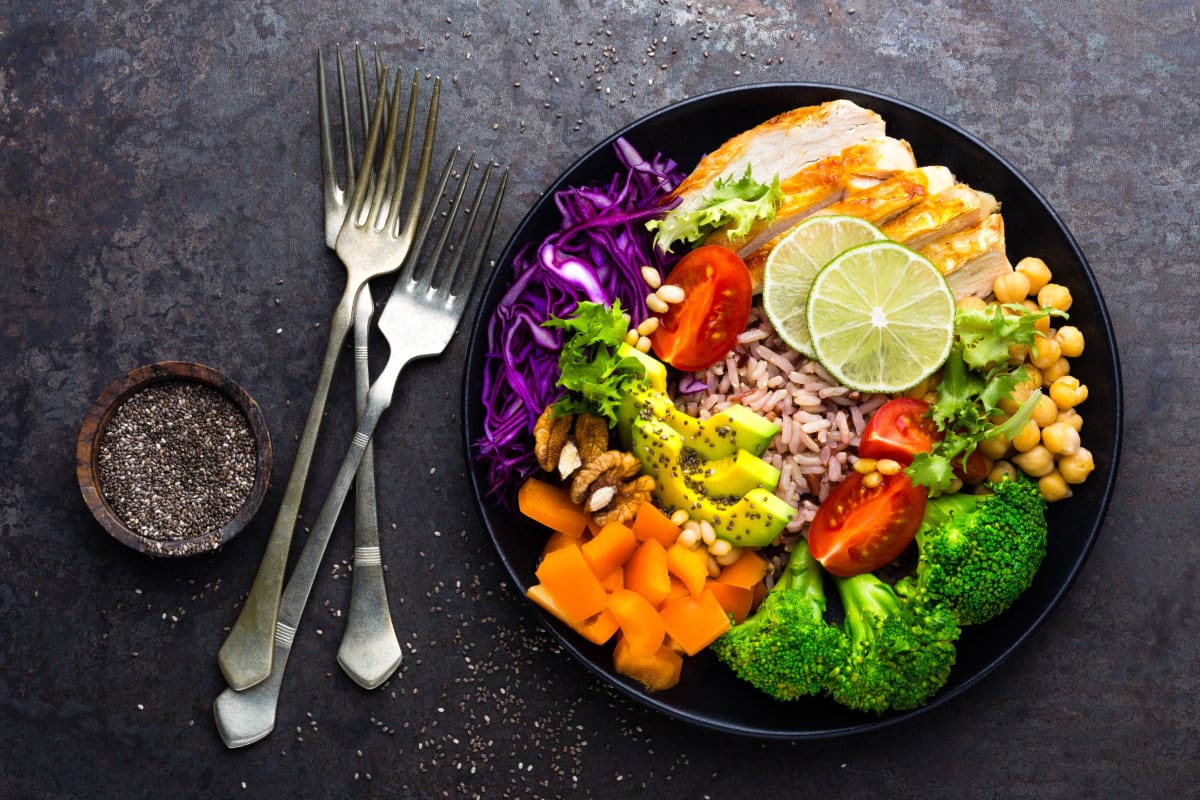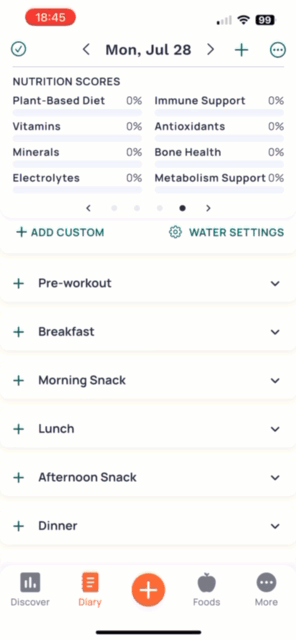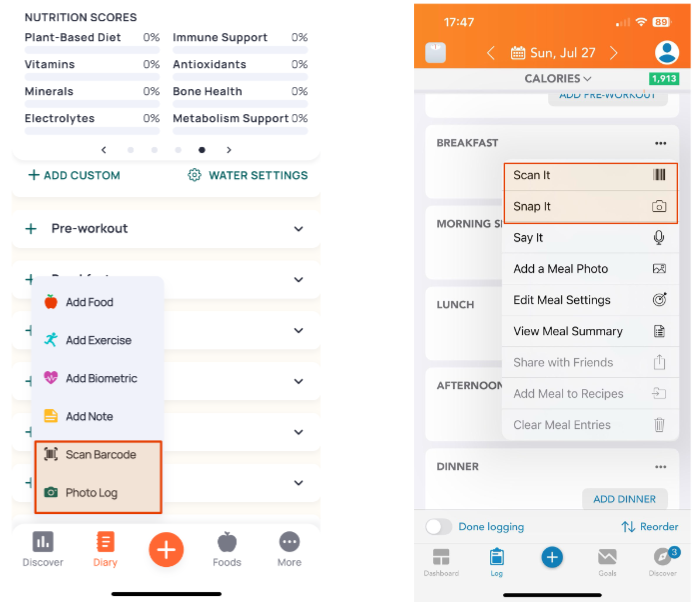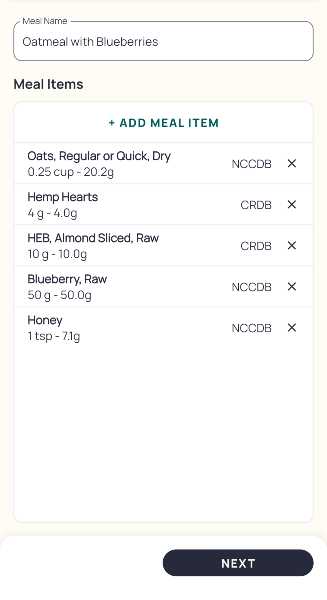3 Easy Ways to Track Your Food
Logging your food is very effective for weight loss, and doesn't have to be a complete pain.

Whether you goal is weight loss, body recomposition, or maximum performance, tracking your food intake is one of the most important ways to ensure success. But having to log everything can be an inconvenient and time-consuming task, and how do you know how many calories are in your meal anyway?
Fortunately, modern technology can help you track not only your calories, but also your macros and micronutrients (vitamins and minerals).
Why Log Your Food?
There are several good reasons to keep track of what you eat and drink. For one, research shows that people who regularly log their food intake lose more weight than those who don’t. A 2017 studyi found that people who logged their diet at least 5 days per week lost an average of about 10 pounds, while those who didn’t lost only 2-4 pounds on average.
Another study published in the Journal of the Academy of Nutrition and Dietetics found that participants who kept a food log lost an average of 10% of their initial body weight over a 6-month period, compared to 4% for those who did not keep a logii.
But logging isn’t just for those who want to lose weight. Tracking macros and micronutrients is key to ensuring peak performance. Protein is the building block for muscle, so athletes need to ensure that they are getting enough. Carbs fuel our bodies and fat is crucial to metabolic processes and immune function, so ensuring right balance when fueling is key to getting the most from your body and mind when training and racing.
A food log can reveal patterns and habits that may be hindering weight loss efforts, such as emotional eating, late-night snacking, or consuming high-calorie foods. It can also help identify gaps, such as vitamin and mineral deficiencies or lack of fiber in the diet.
Food Tracking Apps to the Rescue
In the olden days, we used to print out diet plans and painstakingly log food on a paper worksheet. Today, apps have thankfully replaced this process. I personally recommend two: Lose It and Cronometer. Let’s take a closer look.
Lose It
Lose It is a comprehensive, yet easy-to-use food tracking app. It has an extensive crowd-sourced food database and features rewards and community features to help you remain motivated. When you get started, Lose It asks a series of questions and then sets a calorie target based on your responses. You can adjust your plan via the app.
One downside is the food database. While it’s expansive and mostly accurate, crowd-sourced databases can have inaccuracies or overlaps. Therefore, it’s a good idea to pay attention when logging to make sure you’re getting accurate data.
Cronometer
Cronometer is targeted toward more serious athletes and coaches. I use Cronometer myself and with my clients. Unlike Lose It, Cronometer’s food database draws its data from established sources including the University of Minnesota’s Nutrition Coordinating Center Food & Nutrient Database (NCCDB) and USDA National Nutrient Database for Standard References.
Users can also create custom foods, recipes, and meals within the app.
Need help with your nutrition?
Use code 15OFFSUMMER25 to get 15% off your first month of nutrition coaching. Hurry! This deal ends on August 31, 2025.
Three Easy Ways to Log Your Food
With either app, it’s pretty quick and easy to search for items in the database and add them to your daily food diary. But a few tricks can make it even easier.
Method 1: Scan the Barcode
Every item sold in stores has a UPC label, and most food logging apps offer the ability to retrieve nutrition data by scanning the barcode. From time to time you’ll run across an item that doesn’t exist in the database, but it’s fairly rare.

Method 2: Photo Log
Barcode scanning is great, unless the food doesn’t have a barcode; restaurant meals come to mind. In these cases, you can simply save a quick photo of your meal to your food log. While it’s always better to record the details, having a photo can still be helpful to recalling what you ate and when.

Method 3: Favorites, Saved Meals, and Previous Logs
Most food logging apps, including Lose It and Cronometer, allow you to add your own recipes. I make my own hummus, so I’ve added the recipe so it’s super easy to log it. You can also add foods to your favorites list for quick access. And both apps allow you to copy and paste meals from previous days.
Bonus Method: Meals and Auto-logging
Cronometer also offers a couple of nifty time savers: pre-set meals and auto-logging. I eat oatmeal with blueberries, hemp hearts, and almonds at least once per week, so I’ve created a meal for it so that I can log my breakfast with one tap.
And finally, you can also set auto-logging for meals and foods. I take my vitamins every night before bedtime, so I’ve set Cronometer to automatically log them so I don’t have to.

Summary
Keeping a food log is a key part of any nutrition plan, whether you’re losing weight or targeting maximum performance. Most people think that food logging is a chore, but modern apps provide plenty of ways to streamline the process, making your path to success easier.
References
i Ingels JS, Misra R, Stewart J, Lucke-Wold B, Shawley-Brzoska S. The Effect of Adherence to Dietary Tracking on Weight Loss: Using HLM to Model Weight Loss over Time. J Diabetes Res. 2017;2017:6951495. doi: 10.1155/2017/6951495. Epub 2017 Aug 9. PMID: 28852651; PMCID: PMC5568610.https://pmc.ncbi.nlm.nih.gov/articles/PMC5568610
iiBurke, L. E., Wang, J., & Sevick, M. A. (2010). Self-monitoring in weight loss: a systematic review of the literature. Journal of the American Dietetic Association, 110(1), 151-158. https://pmc.ncbi.nlm.nih.gov/articles/PMC3268700/#S6





